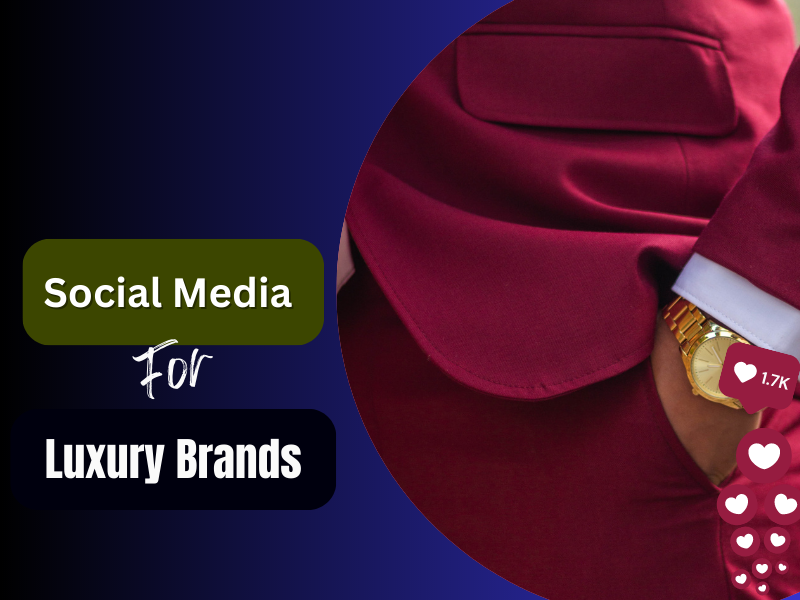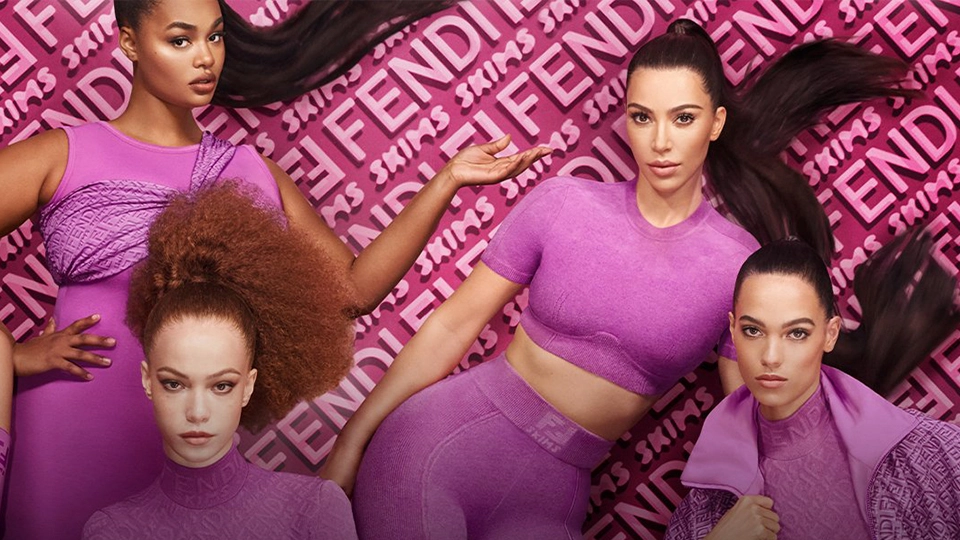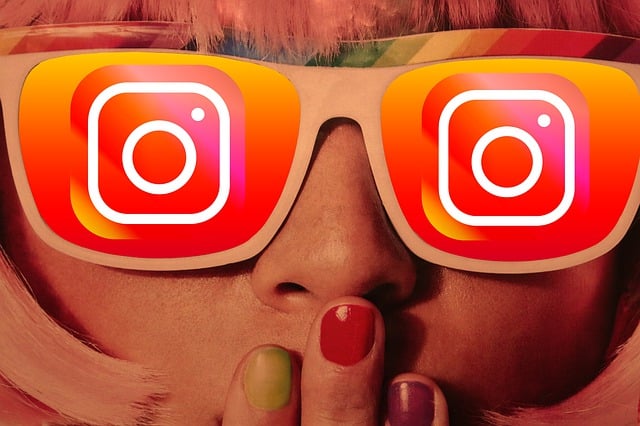This is not your usual “social media for luxury brands” guide. I won’t bore you with talk of prestige. Instead, I’ll show with case studies (and explain) some of the latest strategies you can use to expand your reach and encourage engagement.
The traditional ways of building prestige for luxury brands are no longer effective with millennials and Gen Z. These generations are more active on social media than any other, and they are more likely to be influenced by the opinions of their peers and influencers. As a result, luxury brands need to find new ways to connect with these generations and build prestige.
Intrigued? I thought so!
Join me as I delve into the art of building your label through social media for luxury brands and discover the strategies and tactics that can set them apart in a crowded digital landscape.
Below is what I will cover in this article:
Should Luxury brands use Social Media?
Identifying the target audience for luxury brands
Choose the Most Suitable Social Media Platforms for Your Luxury Brand
Crafting a unique identity on social media for luxury brands
Showcasing luxury products and experiences on social media
Engaging with followers and building a community
Collaborating with influencers and brand ambassadors
Leveraging user-generated content
Leveraging Partnerships with other brands to boost your social media presence
Measuring success and tracking ROI for luxury brands on social media
Conclusion: The future of social media for luxury brands
The Importance of Social Media for Luxury Brands
Short Answer: YES!
Social media has become an integral part of our lives, and luxury brands cannot afford to ignore its impact. With millions of users actively engaging on platforms like Instagram, TikTok, and YouTube, social media offers an unparalleled opportunity for luxury brands to connect with their target audience and increase their reach.
Fact
33% of global luxury sales will take place online by 2025.
One of the main reasons social media is crucial for luxury brands is its ability to showcase their products and experiences in a visually appealing and immersive way. High-quality images and videos can capture the essence of luxury, allowing consumers to envision themselves as part of that exclusive world.
Moreover, social media platforms offer the ability to share stories and behind-the-scenes glimpses into the brand’s mission and purposes.
Another important aspect of social media for luxury brands is the ability to engage with followers and build a community. By responding to comments, addressing customer concerns, and sharing exclusive content, luxury brands can foster a sense of loyalty and belonging among their audience.
The times when a ‘Made in Italy/France’ label necessarily equated with craftsmanship, heritage, lifestyle, and refinement no longer exist.
Pro Tip
Focus on building a community to encourage advocacy and word-of-mouth marketing.
Identifying the Target Audience for Luxury Brands
The magic of social media for luxury brands starts with audience research.
Understanding the target audience is essential for any brand, but it becomes even more critical for luxury brands. The traditional target audience for luxury brands is affluent individuals who value quality, craftsmanship, and exclusivity. They seek products and experiences that reflect their discerning taste and social status.
Keep in mind that the luxury market is undergoing a radical transformation as it adapts to the growing spending power of Gen Z. Read this as “Opportunity.”
Pro Tip
Gen Z are more concerned about sustainability, personalization, digital engagement (including gaming), and authenticity than previous generations. Leverage these trends in your Social Media.
To effectively reach their audiences on social media, luxury brands need to conduct thorough market research and create detailed buyer personas.
These personas should encompass demographic information, lifestyle preferences, interests, and aspirations. By understanding their target audience’s motivations and desires, luxury brands can tailor their social media content to resonate with them on a deeper level.
If you are struggling with this point, below are a few things to consider when understanding your audience:
- Demographics: This includes their age, gender, location, education level, and income.
- Interests: What are they passionate about? What do they read, watch, and listen to?
- Pain points: What are their challenges and problems? What are they looking for in a solution?
- Goals: What do they want to achieve? What are their hopes and dreams?
Fact
Along with Millennials, these consumers accounted “for the entire growth of the luxury market in 2022,” according to Bain & Company, and are predicted to represent 70% of luxury spending by 2025.
Choose the Most Suitable Social Media Platforms for Your Luxury Brand
Understanding your audience is the first step to understanding where you should be active online.
Once you know who your audience is, you can tailor your content and messaging to their interests and needs. This will help you connect with them on a deeper level and build relationships. Start with a few platforms and focus on them. Don’t try to be active on every platform.
To make your life easier, I created an Infographic showing basic demographics by platforms along with the most suitable industries.
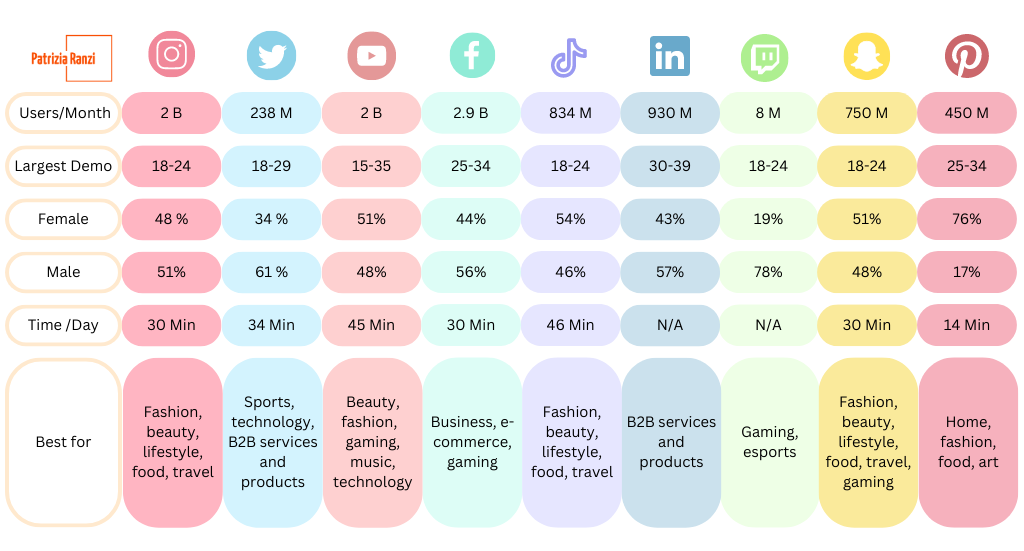
Pro Tip
If your audience includes a wide range of demographics on social media, consider using a compartmentalized approach. This means choosing different platforms to target different segments of your audience.
Crafting a Unique Identity on Social Media for Luxury Brands
Maintaining a consistent and unique brand identity is crucial for building track on social media for luxury brands. Social media platforms provide an opportunity to showcase the brand’s personality, values, and aesthetics in a visually engaging manner.
To craft a unique brand identity on social media, luxury brands should start by defining their brand’s core values and positioning.
These values should align with the target audience’s aspirations and resonate with their emotions. Once these values are established, they can be translated into a visual language that is reflected in every post, from the choice of colors and typography to the overall aesthetic.
In addition to visual elements, luxury brands should also pay attention to the tone of voice used in their social media content. It should be sophisticated, elegant, and consistent with the brand’s overall image. This ensures that every interaction with the audience reinforces the brand’s exclusivity.
Pro Tip
A successful social media campaign requires a cohesive media ecosystem. All touchpoints for consumers must be consistent, with product, partnership, and social media speaking the same language.
Creating a content calendar can help luxury brands plan their social media posts in advance and ensure consistency in messaging and visual presentation. By mapping out themes, key messages, and content types, luxury brands can maintain a cohesive brand identity while also keeping their social media presence fresh and engaging.
Showcasing Luxury Products and Experiences on Social Media
One of the primary purposes of social media for luxury brands is to showcase their products and experiences in an enticing way. The goal is to create a desire among the target audience to own or be a part of the brand’s offerings.
Visual content is key when it comes to showcasing luxury products. High-quality images and videos that highlight the craftsmanship, attention to detail, and exclusivity of the products can evoke a sense of desire and aspiration. Additionally, incorporating lifestyle imagery that showcases the products in real-life scenarios can help potential customers envision themselves using and enjoying the luxury items.
Storytelling is another powerful tool that can be used on social media for luxury brands to create an emotional connection with their audience. By sharing the brand’s heritage, inspirations, and the stories behind their products, luxury brands can tap into the target audience’s desire for authenticity and craftsmanship.
Luxury brands can also leverage features like Instagram Stories and IGTV to provide behind-the-scenes glimpses into the brand’s world. From exclusive events and fashion shows to interviews with brand ambassadors, these features allow luxury brands to offer a more immersive and exclusive experience to their followers.
Pro Tip
You should also consider your competitors. Where are they active on social media? What kind of content are they posting? You don’t want to be duplicating their efforts, so you need to find a way to differentiate yourself.
For example, if your competitors are all posting product photos on Instagram, you might want to focus on creating more engaging content, such as behind-the-scenes videos or customer testimonials.
Here are some additional tips for content creation:
- Be consistent with your posting schedule.
- Use relevant hashtags.
- Engage with your audience. Respond to comments and questions.
- Track your results. Use analytics to see which platforms are performing the best.
Engaging with Followers and Building a Community
Building a community of loyal followers is essential for luxury brands to maintain their desirability. Social media platforms provide an ideal space for luxury brands to engage with their audience, build relationships, and foster a sense of belonging.
Responding to comments and messages in a timely and personalized manner is crucial for building a rapport with followers. Luxury brands should aim to provide exceptional customer service and make their audience feel valued and heard. This not only enhances the brand’s reputation but also encourages positive word-of-mouth recommendations.
In addition to individual interactions, luxury brands can also engage with their audience through interactive content. Polls, quizzes, and contests not only encourage participation but also provide valuable insights into the preferences and opinions of the target audience. This information can be used to tailor future content and offerings to better meet their needs and desires.
Creating a sense of exclusivity and reward for loyal followers can also help build a strong community. Luxury brands can offer exclusive promotions, early access to new collections, and personalized experiences to their most engaged followers. This fosters a sense of belonging and encourages brand advocacy among the target audience.
Don’t even think about buying followers.
Fake followers don’t engage with your content, so you won’t see any increase in reach or engagement.
The goal is to create a community that will buy from your store and advocate for you.
Collaborating with Influencers and Brand Ambassadors
Influencer marketing has become an integral part of social media for luxury brands. By collaborating with influencers and brand ambassadors who align with the brand’s values and target audience, luxury brands can reach a wider audience.
When selecting influencers and brand ambassadors, luxury brands should prioritize quality over quantity. It’s essential to choose individuals who have a genuine affinity for the brand and can authentically represent its values. Their content should align with the brand’s aesthetic and resonate with the target audience.
Pro Tip
You should also consider your competitors. Where are they active on social media? What kind of content are they posting? You don’t want to be duplicating their efforts, so you need to find a way to differentiate yourself.
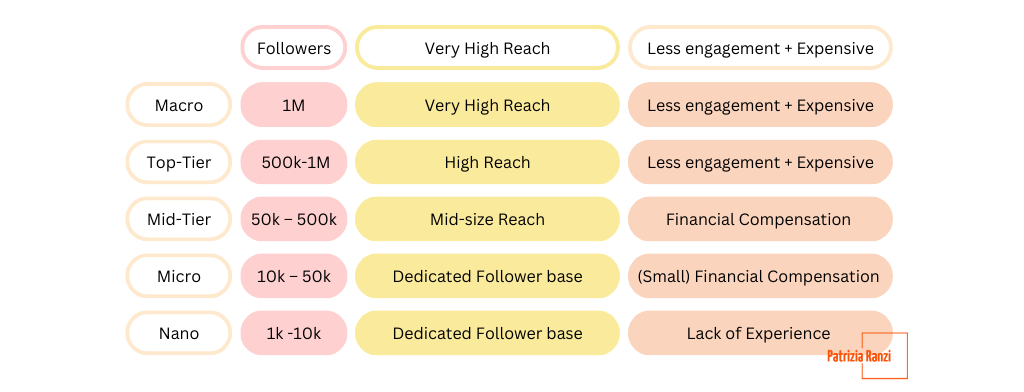
Collaborating with influencers and brand ambassadors can take various forms, from sponsored content and product placements to ambassador programs and brand partnerships. These collaborations can help luxury brands tap into the influencer’s loyal following and leverage their credibility and influence to enhance the brand’s reputation.
Mini Case Study #1
Lily-Rose Depp, a Gen Z Instagram personality and the child of Johnny Depp and Vanessa Paradis, has become a true icon for Chanel.
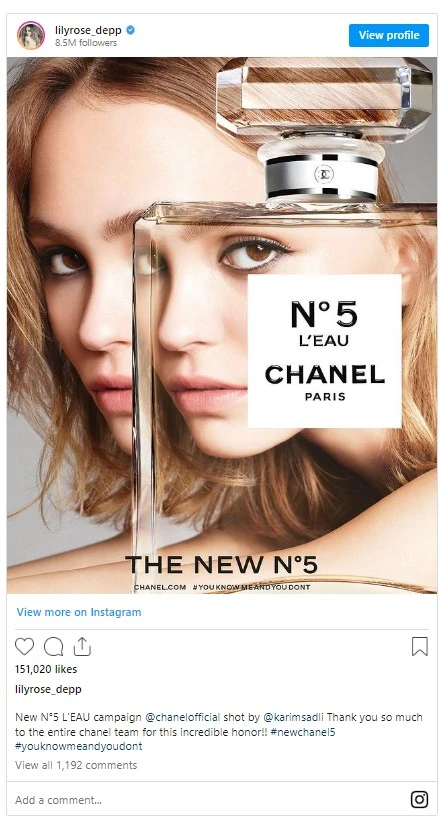
Mini Case Study #2
Louis Vuitton x Emma Chamberlain: This collaboration launched in March 2023 and featured a capsule collection of handbags, accessories, and apparel designed by the American YouTuber and social media personality.
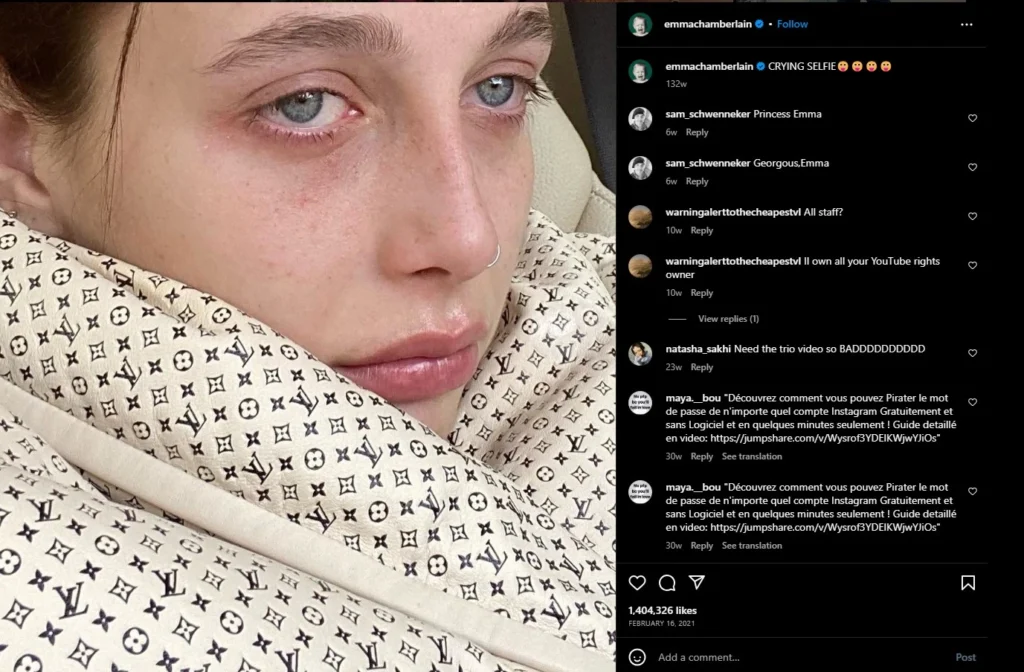
Want to learn how to find the right influencer for your startup? Check this step-by-step guide.
Leveraging User-Generated Content
User-generated content (UGC) is a powerful tool that luxury brands can use to engage their audience. UGC refers to content created by customers or fans of the brand, showcasing their experiences with the brand’s products or services.
By encouraging and showcasing UGC on social media, luxury brands can tap into the power of social proof and create a sense of community among their followers. When potential customers see others enjoying and endorsing the brand, it generates trust and increases the desirability of the products or experiences.
Luxury brands can encourage UGC by creating branded hashtags, running contests, or featuring customer testimonials and reviews. Reposting and crediting UGC not only acknowledges and appreciates the brand’s loyal customers but also creates a sense of exclusivity and recognition.
Mini Case Study
Rihanna’s star power and popularity with Gen Z made Savage X Fenty a successful brand from the start. However, the brand’s marketing is also top-notch. They use the hashtag #SavageXFenty to encourage everyday people, or micro-influencers, to share photos of themselves in the brand’s lingerie. This helps the brand appear more relatable and trustworthy to consumers. A recent survey by Student Beans found that 34% of Gen Z are more likely to buy something if it is endorsed by someone with 10,000 followers, compared to 24% who are influenced by people with a million followers.
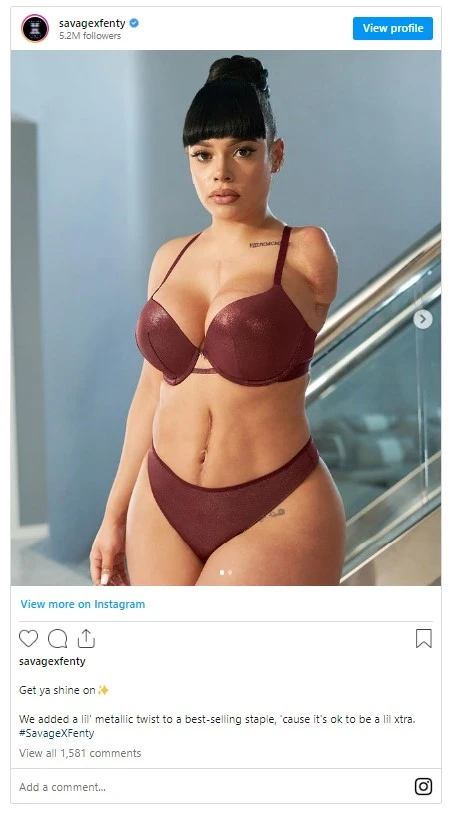
Leveraging Partnerships to boost social media for luxury brands
Luxury brands are increasingly partnering with brands that are targeting Gen Z in order to reach a younger audience and stay relevant in the ever-changing fashion landscape.
These partnerships can take many forms, such as product collaborations, co-marketing campaigns, or even joint retail spaces. By partnering with brands that are popular with Gen Z, luxury brands can tap into their target audience’s interests and values and create marketing campaigns that are more likely to resonate.
Once you create a partnership, you also have plenty of content material to talk about on social media. PLUS you also have a wider audience that encompasses your partner’s one.
Pro Tip
If you are going to launch a partnership, the key is creating expectations on social media. Tease your audience.
Mini Case Study #1
In 2023 Tiffany & Co’s launched a collaboration with Nike on a limited edition pair of Air Force. Result? Ultra-rare sneakers sold out in seconds despite $400 price tag and mixed reviews from sneakerheads.
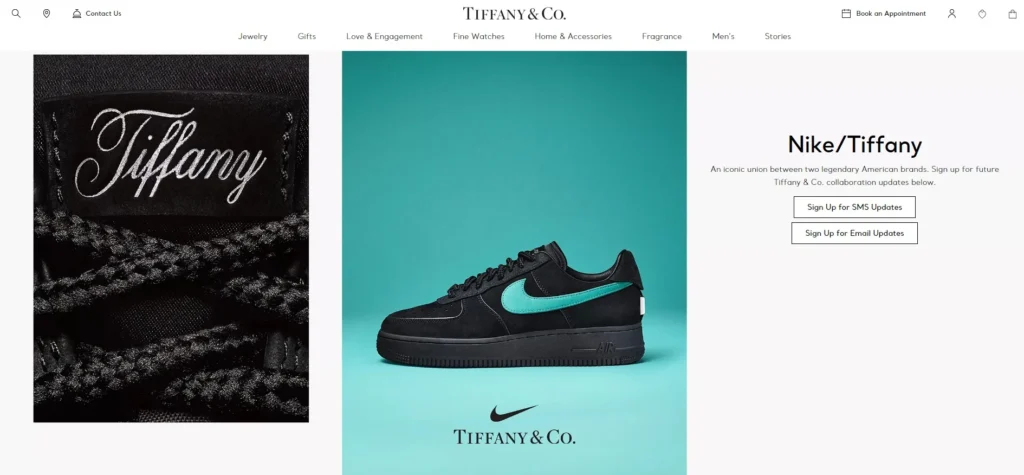
Measuring Success and Tracking ROI for Luxury Brands on Social Media
Measuring the success of social media efforts is crucial for luxury brands to optimize their strategies and track their return on investment (ROI). By analyzing key metrics, luxury brands can evaluate the effectiveness of their social media campaigns and make data-driven decisions.
Some essential metrics to track include engagement rate, reach, impressions, click-through rate, and conversions. These metrics provide insights into the level of audience engagement, the reach of the brand’s content, and the effectiveness of driving traffic and conversions.
Luxury brands should also pay attention to sentiment analysis by monitoring mentions, comments, and reviews. This helps gauge the overall sentiment towards the brand and identify areas for improvement or potential issues that need addressing.
To track ROI, luxury brands can use specialized tools that provide insights into the revenue generated from social media campaigns. By attributing sales or conversions to specific social media activities, brands can determine the impact of their social media efforts on the bottom line.
Social Media for Luxury Brands Case Study: Gucci
Gucci has been one of the most successful luxury brands in recent years, and a big part of its success has been its digital strategy. The brand has been very effective at reaching and engaging with Gen Z consumers, who are increasingly important to the luxury market.
Here are some of the key elements of Gucci’s digital strategy:
Social Media – Overview
Focus on social media. Gucci has a strong presence on all major social media platforms, and it uses these platforms to connect with Gen Z consumers in a way that is authentic and engaging. The brand’s social media content is often humorous, creative, and visually appealing, and it often features Gen Z influencers.
Gucci uses different social media strategies for each platform, tailored to the specific audience of that platform. For example, on Instagram, they take a more traditional approach and focus on showcasing their ads and collections.
On TikTok, Gucci takes a more conversational approach. They use TikTok to share videos about what is important to them and their Gen Z audience. For example, they have published several videos with top influencers speaking about equality with the hashtag #GucciChime. This resonates with Gen Z consumers, who are all about community and taking a stand for what they believe in.
Mini Case Study – Influencer
On TikTok, Gucci consistently leverages trends, such as the “POV” challenge that they collaborated on with Italian Tennis player Jannik Sinner.
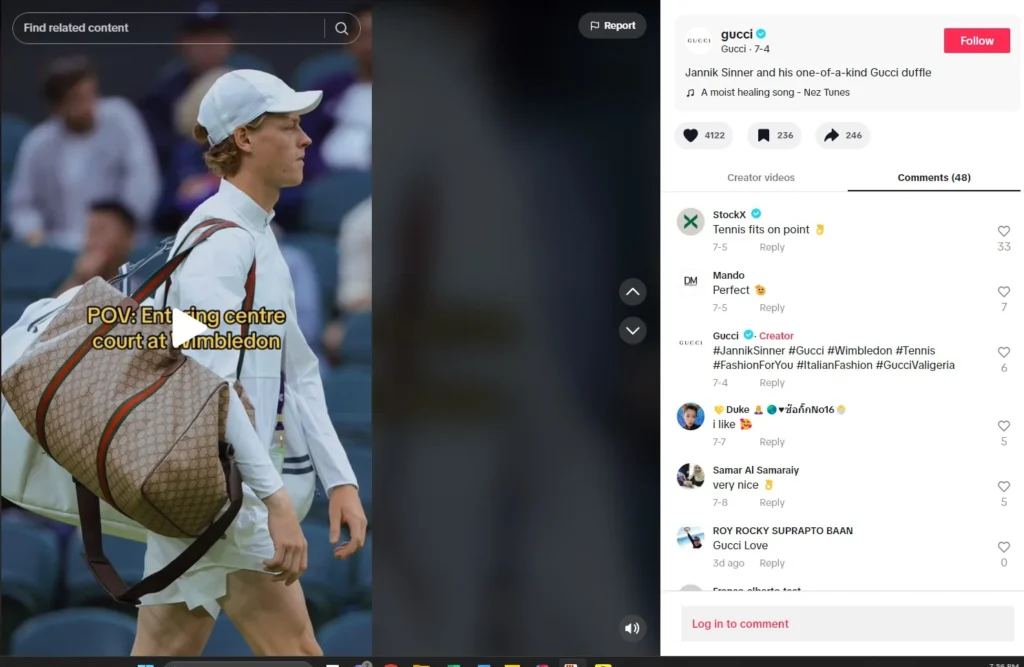
Gucci’s Influencer marketing
Mini Case Study – Influencer
In 2020 Gucci collaborated with TikTok trainspotter Francis Bourgeois.
Francis Bourgeois, Gen Z’s favorite TikTok trainspotter, has become a household name since he shot to fame in 2020. He now has 2.3 million followers and 40.1 million likes on the app, thanks to his unmatched passion for trains, infectious laugh, wholesome content, and fish-eye camera angle.
Gucci continues to collaborate with Francis to this day.
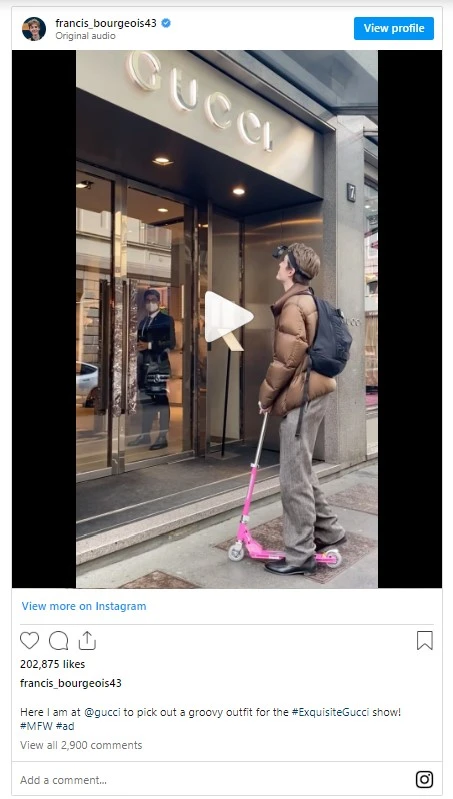
Gucci’s User Generated Content (UGC)
Mini Case Study – UGC
Gucci has also embraced UGC, with its “#TFWGucci” campaign. The campaign encouraged customers to share their own memes featuring Gucci products.
The campaign was a huge success, with over 9000 user-generated memes shared on social media.
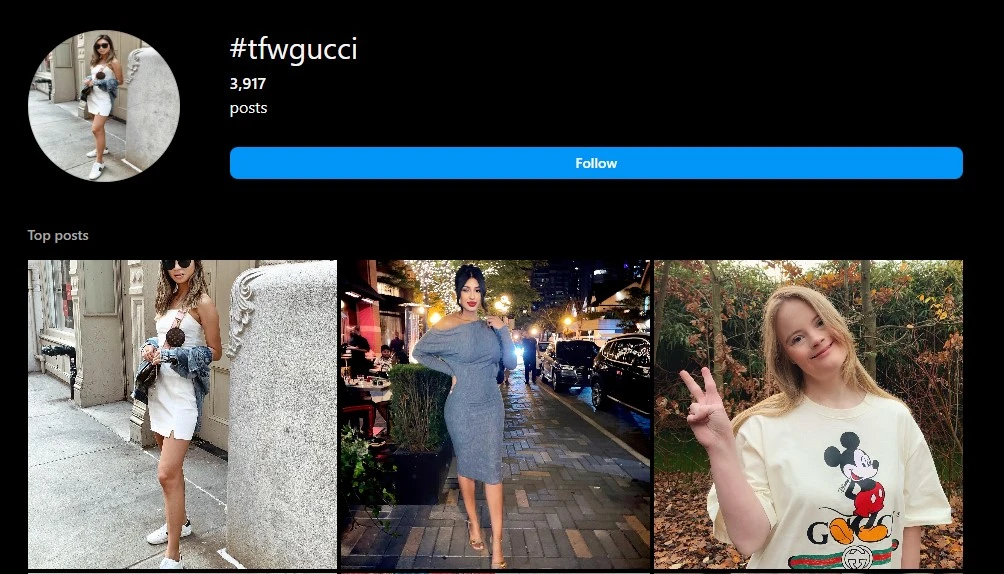
Gucci’s Partnerships
Mini Case Study – Partnerships
Partnerships with gaming and esports platforms. Gucci has also partnered with gaming and esports platforms to reach Gen Z consumers. For example, it has partnered with Xbox to create a Gucci-branded console.
The brand has created exclusive in-game items for popular games, like Roblox, and it has also launched The Gucci Gaming Academy along with some games. And, of course, on top of that, created a capsule collection called “Goof Game.”
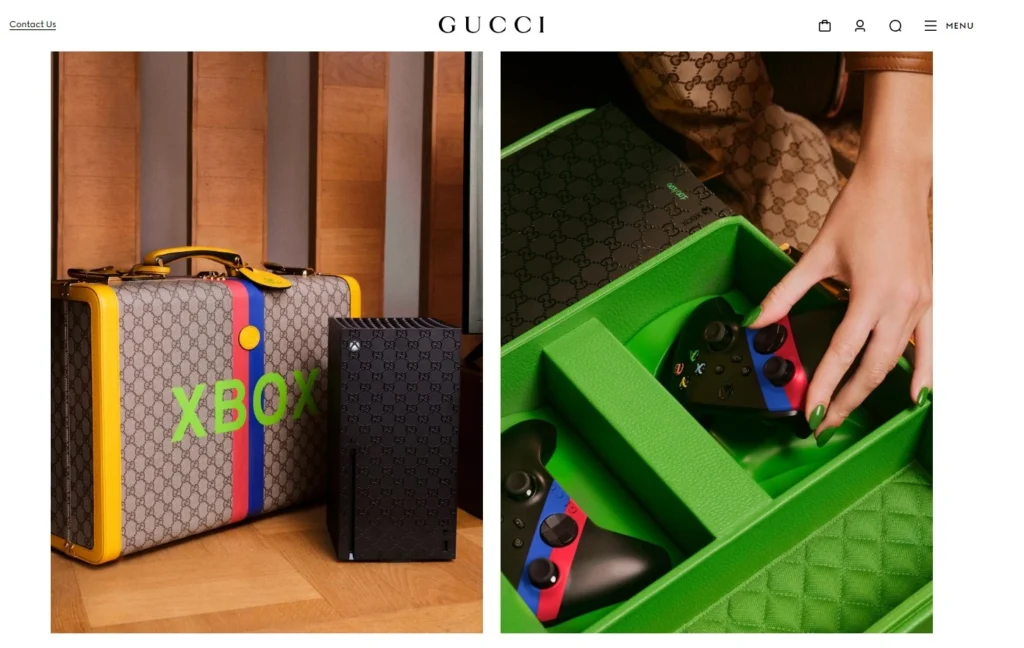
What’s the implication of their Social Media?
Gucci created The Gucci Vault on Discord. This is a thriving community of over 50,000 fans who discuss the luxury brand and opt-in to exclusive experiences. Gucci leverages Discord’s unique features to engage directly with this active community and gain valuable insights into their interests and needs.
How much does Gucci spend on digital marketing and advertising?
The most recent annual figures for Gucci’s advertising spend is roughly $567 million, an estimated 11% of Gucci’s revenue.
Conclusion: The Future of Social Media for Luxury Brands
Social media will continue to play a pivotal role for luxury brands in the future. As technology evolves, luxury brands will need to adapt and embrace new platforms and features to stay relevant and engage their target audience effectively.
The art of building a label through social media for luxury brands lies in crafting a unique brand identity, showcasing products and experiences in an enticing way, engaging with followers to build a community, and leveraging influencers and user-generated content. By employing these strategies and measuring success through data analysis, luxury brands can navigate the digital landscape with finesse and elevate their brand to new heights.
Do you have any comments on the strategies to employ on social media for luxury brands? Let me know in the comments!

